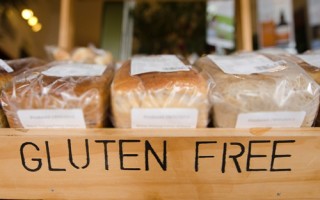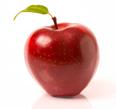
You've seen the gluten-free label stamped on packages of food at the store. Meanwhile, you've likely gone out to eat with someone who had to make sure their dish didn't contain any gluten. So what is gluten exactly? The Celiac Disease Foundation defines gluten as the overarching term for the proteins found in wheat, barley, rye and triticale food products. It acts as a glue, holding these foods together.
Though you may think gluten is only found in breads and pastas, it can also be found in seasonings, salad dressing, food coloring, malt, soups and beer. Many people throughout the country have a gluten allergy or a gluten sensitivity, which makes it difficult for their bodies to digest this specific protein. The National Institute of Diabetes and Digestive and Kidney Disease states that about one out of every 133 people in the country has celiac disease, which is a severe autoimmune disorder that causes the body's immune system to attack gluten, rather than digest it.
"The GAPS Diet is gluten-free."
The gluten-free fad
Many Americans are going gluten-free, even if they don't suffer from a gluten allergy or sensitivity. Though popular, scientists have found correlations between grain-based diets and certain degenerative disease, such as obesity, thyroid disorders and cancer. Meanwhile, people who live gluten-free lifestyles report feeling healthier and experiencing less stomach problems than they did while eating gluten.
Despite the benefits of going gluten-free, don't be fooled by marketers trying to take advance of their fad. For example, Forbes reported that a certain food store sells gluten-free baby shampoo – which shouldn't be consumed in the first place – and some food products, such as meats and cheeses, claim to be gluten-free, even though they naturally do not contain gluten.
Why GAPS Diet may be a better alternative to gluten-free
The GAPS Diet is gluten-free as participants must cut out consumption of all grains and processed/refined carbohydrates. However, some people who were gluten-free and recently switched to the GAPS Diet have said they feel healthier, more energized and less overwhelmed. Part of this is because grocery shopping and meal planning are easier than ever before. On the GAPS Diet, you cut out the vast majority of packaged foods, so you don't have to worry about whether your packaged ingredients are gluten-free like you did before.
Additionally, setting boundaries is a lot easier on the GAPS Diet. After all, with so many companies now offering gluten-free cakes, cookies, pies and other fattening desserts, it's a lot easier to say no when you have cut out these ingredients for good on the GAPS Diet. Finally, the GAPS Diet focuses on healing your gut lining and improving your health, not just cutting out gluten that can be harmful to your body. Essentially, the diet is more about healing than avoiding.
For additional information about the GAPS Diet and how to get started, you can consult with a Certified GAPS Practitioner and visit our website today!

